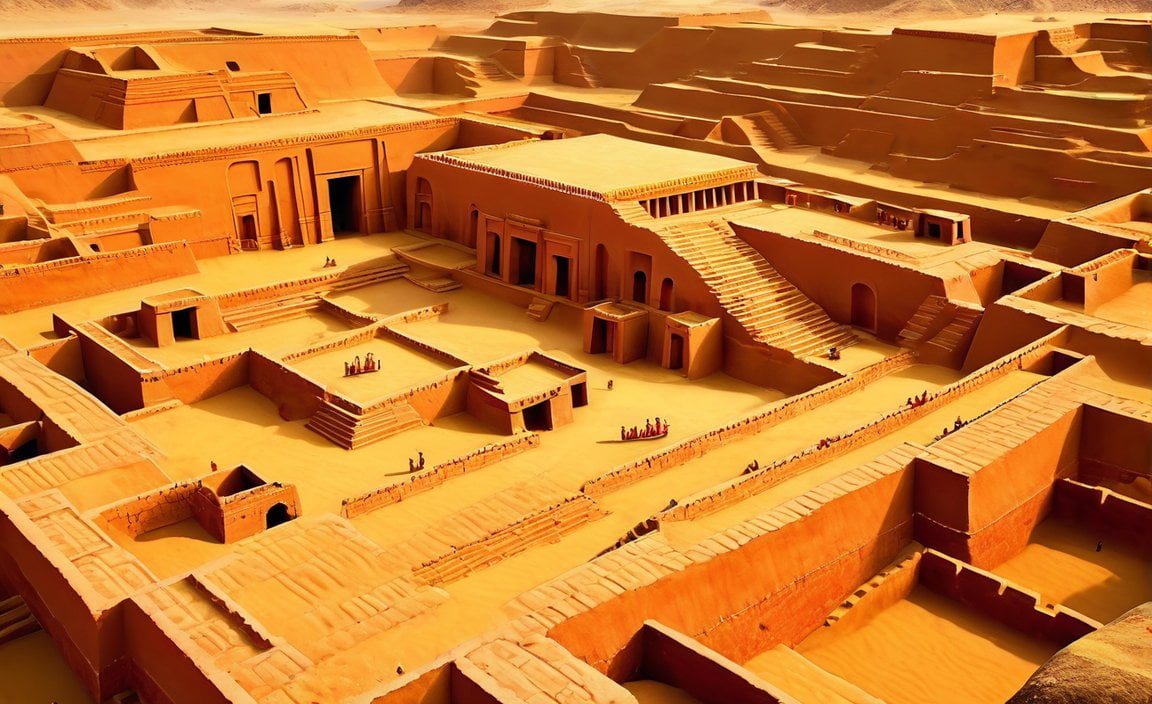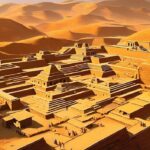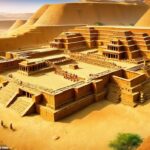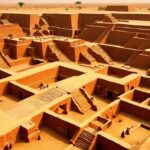Discover 5 Intriguing Facts about the Indus Valley Civilization, an ancient society that flourished in South Asia over 4,500 years ago. As you delve into this captivating historical journey, prepare to be amazed by the rich cultural heritage and remarkable innovations of this enigmatic civilization. From urban planning that laid the groundwork for modern cities to a script that remains undeciphered, these five facts will shed light on the Indus Valley Civilization’s fascinating achievements and enduring mysteries. Get ready to uncover the secrets of a lost world that continues to intrigue archaeologists and historians to this day.
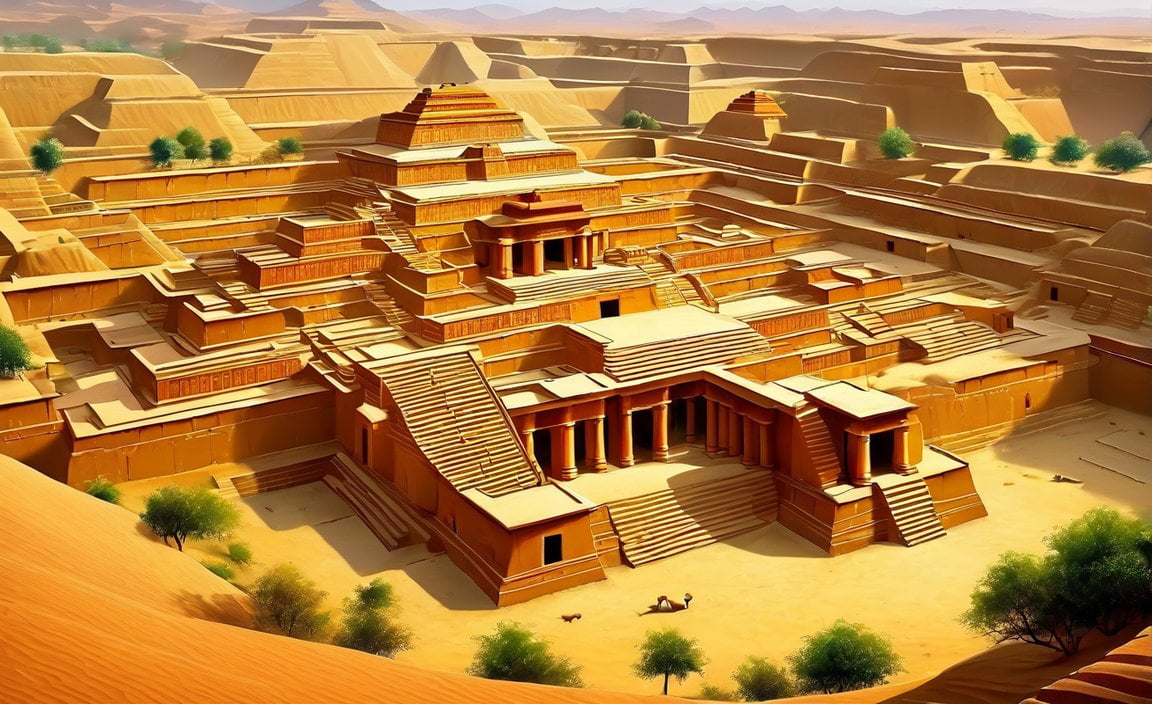
Key Takeaways:
- The Indus Valley Civilization, dating from about 2500 BCE to 1700 BCE, was one of the oldest and largest civilizations in the world.
- This ancient civilization spanned across modern-day Iran, Afghanistan, Pakistan, and India, along the Indus and Ghaggar-Hakra Rivers.
- The Indus Valley Civilization had remarkable advancements in urban planning, sanitation, measurements, trade, and technology.
- The collapse of this civilization remains a mystery, as its script remains undeciphered.
- The Indus Valley Civilization introduced buttons and step-wells, making it the first civilization to use them.
5 Interesting Facts about Indus Valley Civilization
- Fact 1: The Indus Valley Civilization was one of the oldest and largest civilizations in the world, dating from about 2500 BCE to 1700 BCE.
The Indus Valley Civilization, also known as the Harappan Civilization, emerged around 2500 BCE and thrived until 1700 BCE. It flourished in the region that now encompasses modern-day Iran, Afghanistan, Pakistan, and India. This ancient civilization is remarkable for its longevity and size, making it a significant player in the early chapters of human history.
- Fact 2: The civilization covered parts of modern-day Iran, Afghanistan, Pakistan, and India, along the Indus River and the Ghaggar-Hakra River.
The Indus Valley Civilization stretched across a vast geographical area. It extended along the banks of the Indus River and its tributaries, including the Ghaggar-Hakra River. With its extensive reach, this civilization showcased its influence and ability to establish settlements in various regions, highlighting its advanced urban planning and adaptability.
- Fact 3: It had advanced urban planning, sanitation, measurement, trade, and technology.
The Indus Valley Civilization made significant advancements in various aspects of society. They showcased exceptional urban planning, with their cities designed in a grid-like pattern, complete with well-organized streets and drainage systems. They also developed sophisticated sanitation systems, using underground sewage systems. Moreover, their precise measurement techniques are evident from the standardization of bricks used in construction. This civilization also engaged in long-distance trade, and their technology allowed them to produce fine pottery, bronze objects, and intricate jewelry.
- Fact 4: The Indus Valley Civilization collapsed mysteriously, and its script remains undeciphered.
Despite its grandeur, the Indus Valley Civilization faced a mysterious collapse around 1700 BCE. The reasons behind its decline are yet to be fully understood. Additionally, the script used by this civilization has remained undeciphered, adding to the intrigue and enigma surrounding their culture and daily life. Scholars have made progress in interpreting some symbols, but a complete understanding of their writing system remains elusive.
- Fact 5: It was the first civilization to use buttons and step-wells.
The Indus Valley Civilization contributed significant innovations to human history. They were the first civilization to use buttons, showcasing their understanding of clothing design and fastening techniques. Additionally, they developed step-wells, which were elaborate structures used for water storage and management. These step-wells not only provided a reliable water source but also showcased the architectural prowess of the civilization.
These five intriguing facts about the Indus Valley Civilization highlight its significance and the advancements it achieved. From its vast geographical reach and advanced urban planning to its technological innovations, this ancient civilization left an indelible mark on the history of the region. Despite the mysterious collapse and undeciphered script, the legacy of the Indus Valley Civilization endures through archaeological discoveries and cultural influences that continue to captivate researchers and enthusiasts alike.
Here are some fascinating facts you didn’t know about Vatican City. Explore these 5 facts about Vatican City to uncover its intriguing history and cultural significance. Learn more at 5 facts about Vatican City.
Discover the hidden marvels of Prince Edward Island with these 5 interesting facts. From its stunning landscapes to its warm hospitality, Prince Edward Island is a must-visit destination. Dive deeper into its enchanting secrets at 5 interesting facts about Prince Edward Island.
Embark on an unforgettable journey through the African savanna and unlock the mysteries of its extraordinary wildlife. Uncover the 5 interesting facts about the African savanna that will leave you in awe. Delve into the wonders of nature at 5 interesting facts about the African savanna.
Step back in time and explore the lesser-known facts about the Indus Valley Civilization. Unravel the mysteries of this ancient civilization with these 5 fascinating facts. Immerse yourself in history at 5 lesser known facts about the Indus Valley Civilization.
Outline 3: Sophisticated Water Management
The Indus Valley Civilization, also known as the Harappan Civilization, was a remarkable ancient civilization that thrived around 2500 BCE to 1700 BCE. It covered parts of modern-day Iran, Afghanistan, Pakistan, and India, along the Indus and Ghaggar-Hakra Rivers. This fascinating civilization showcased advanced urban planning, technology, trade, and most importantly, a sophisticated water management system. In this article, we will explore five intriguing facts about the Indus Valley Civilization’s sophisticated water management.
Fact 1: The Importance of Water in the Indus Valley Civilization’s Growth
Water played a vital role in the development and prosperity of the Indus Valley Civilization. The Indus River and the Ghaggar-Hakra River, among others, provided a steady water supply for irrigation, agriculture, and human consumption. The civilization thrived along these rivers and utilized their resources to sustain its population.
Fact 2: Citywide Drainage Network
The Indus Valley Civilization is known for its remarkable urban planning, which included an extensive citywide drainage network. The cities, such as Harappa and Mohenjo-Daro, had a well-planned system of drains and gutters that helped manage rainwater and wastewater effectively. The advanced drainage system ensured that the cities remained clean and prevented flooding during heavy rainfall.
Fact 3: Indoor Toilets Connected to the Drainage Network
One of the most intriguing aspects of the Indus Valley Civilization’s water management system was the presence of indoor toilets that were connected to the citywide drainage network. The toilets were located within houses and buildings, and their drainage pipes led to the larger underground sewer system. This remarkable innovation showcases the civilization’s sophisticated understanding of sanitation and hygiene.
Fact 4: Public Wells and Water Storage
In addition to its drainage system and indoor toilets, the Indus Valley Civilization also had public wells and water storage facilities. These wells and storage tanks provided a convenient and accessible water source for the community. The civilization recognized the importance of water conservation and made efforts to ensure its availability through such infrastructure.
Fact 5: Sustainable Water Management Practices
The Indus Valley Civilization implemented sustainable water management practices to ensure the longevity of their water resources. They made use of natural reservoirs and created artificial ones to store water during the monsoon season. These reservoirs were strategically located to cater to the needs of the community throughout the year. Moreover, the civilization practiced careful watershed management to preserve water quality and prevent contamination.
Key Takeaways:
– The Indus Valley Civilization had a sophisticated water management system, including a citywide drainage network and indoor toilets connected to this network.
– Water was essential for the civilization’s growth, and the rivers played a crucial role in providing a steady water supply.
– The civilization had a well-planned drainage system that prevented flooding and maintained cleanliness.
– Indoor toilets connected to the drainage system showcased the civilization’s advanced understanding of sanitation.
– The presence of public wells and water storage facilities ensured accessible water sources for the community.
– The civilization implemented sustainable water management practices, including the use of reservoirs and watershed management.
Sources:
1. Learnodo Newtonic
2. OpenStax
As an experienced historian with expertise in ancient civilizations, my aim is to provide you with the most intriguing and accurate information about the Indus Valley Civilization’s sophisticated water management system. By exploring these fascinating facts, we gain a deeper understanding of the intelligence and ingenuity of this ancient civilization.
Outline 4: Flourishing Trade Network
The Indus Valley Civilization, which thrived from approximately 2500 BCE to 1700 BCE, was a remarkable ancient civilization that left behind a legacy of advanced urban planning, technological innovations, and a sophisticated water management system. Among its many notable aspects, one fascinating aspect of the Indus Valley Civilization is its flourishing trade network. In this article, we will explore five intriguing facts about the trade network that fueled the economic prosperity of this ancient civilization.
Fact 1: Evidence of Long-Distance Trade
Archaeological excavations have revealed evidence of extensive trade networks that connected the Indus Valley Civilization with other regions. Artifacts such as beads made of precious stones, metals like copper and bronze, and pottery have been found in various settlements, indicating long-distance trade. This suggests that the Indus Valley people were actively engaged in trade with distant regions, establishing commercial and cultural connections.
Fact 2: Trade Routes and Transportation
The Indus Valley Civilization had a well-developed network of trade routes that facilitated the movement of goods across different regions. These trade routes connected cities within the civilization, as well as linked them to neighboring civilizations and regions. It is believed that trade was conducted through both overland routes and maritime routes along rivers and coastline, highlighting the civilization’s proficiency in transportation and navigation.
Fact 3: Widespread Commerce and Specialization
The flourishing trade network of the Indus Valley Civilization supported widespread commerce and economic specialization. Different cities within the civilization developed specialized industries and crafts, producing goods that were in demand both within and beyond their territories. Among the notable products traded were pottery, textiles, jewelry, metalwork, and agricultural produce. This specialization in production boosted economic growth and created a vibrant trade environment.
Fact 4: External Trade Relations
The Indus Valley Civilization maintained trade relations with other contemporary civilizations, such as Mesopotamia and ancient Egypt. Archaeological findings, including seals and inscriptions, provide evidence of trade interactions between these civilizations. The exchange of goods, technologies, and ideas through these trade relations not only contributed to the economic prosperity of the Indus Valley region but also fostered cultural exchange and influenced the development of different civilizations.
Fact 5: Trade as a Catalyst for Social Complexity
The flourishing trade network of the Indus Valley Civilization played a crucial role in shaping the social structure and fostering social complexity within the civilization. With increased trade opportunities, the society witnessed the emergence of specialized traders, merchants, and intermediaries who facilitated the exchange of goods. This division of labor and the accumulation of wealth led to the development of social hierarchies and increased societal complexity. Trade, thus, became a catalyst for social and economic transformation.
Key Takeaways:
- The Indus Valley Civilization had a well-developed trade network that facilitated long-distance trade and connected the civilization to other regions.
- Trade routes, both overland and maritime, played a crucial role in transportation and the movement of goods.
- Economic specialization and widespread commerce were key features of the Indus Valley trade network, with different cities producing and trading specific goods.
- The civilization maintained trade relations with other contemporary civilizations, contributing to cultural exchange and the transfer of goods and ideas.
- Trade also shaped the social structure of the Indus Valley Civilization, leading to the emergence of specialized traders and social hierarchies.
Sources:
– Learnodo Newtonic
– Listverse
Outline 5: Mysterious Decline of the Indus Valley Civilization
Overview
The Indus Valley Civilization was an ancient civilization that flourished in present-day Pakistan and northwest India. It was known for its advanced urban planning, sanitation systems, and architectural structures. However, the civilization declined around 1800 BCE, and the reasons for its collapse remain a mystery. In this article, we will explore some intriguing theories that scholars have proposed to explain the mysterious decline of the Indus Valley Civilization.
Theories of Decline
Climate Change: Some researchers believe that climate change played a role in the decline of the Indus Valley Civilization. They suggest that a shift in weather patterns led to a decrease in rainfall, causing a decline in agricultural productivity and disrupting the civilization’s economy.
Drying up of the Sarasvati River: The Sarasvati River, one of the major rivers of the region, is believed to have gradually dried up during this period. This reduction in water supply may have impacted agricultural practices and led to social and economic unrest.
Overpopulation: Another theory posits that the rapid growth of the Indus Valley Civilization led to overpopulation and strain on resources. As the population increased, the available land for cultivation may have become insufficient, leading to food shortages and social instability.
Decline in Trade: The civilization’s decline could also be attributed to a decline in long-distance trade. The loss of trade networks with other civilizations may have disrupted the economy and contributed to the decline.
Gradual Migration: It has been suggested that rather than a sudden collapse, the Indus Valley Civilization experienced a gradual migration of its people to the Himalayan foothills. This migration may have been driven by various factors, including changing environmental conditions and the search for new resources.
Key Takeaways:
- The decline of the Indus Valley Civilization is a subject of ongoing debate and speculation.
- Possible factors contributing to its decline include climate change, the drying up of the Sarasvati River, overpopulation, a decline in trade, and gradual migration.
- Understanding the reasons behind the decline is challenging due to the scarcity of written records and the complexity of ancient civilizations.
- Further research and archaeological discoveries are needed to unravel the mysteries surrounding the decline of this remarkable civilization.
Sources:
– 10 Interesting Facts About The Indus Valley Civilization
– Decline of the Indus River Valley Civilization (c. 3300-1300 BCE)
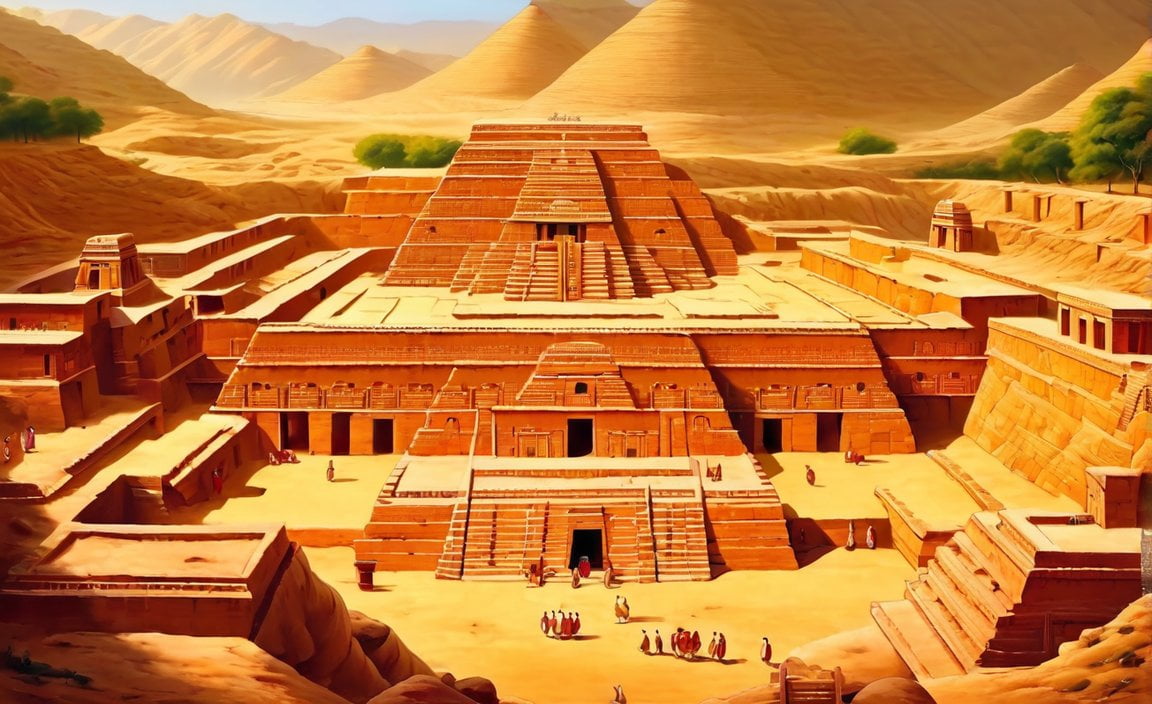
FAQ
Q1: What is the significance of the Indus Valley Civilization?
A1: The Indus Valley Civilization was one of the oldest and largest ancient civilizations in the world, showcasing advanced urban planning, sanitation systems, and technological innovations. Its legacy can still be seen in archaeological discoveries and cultural influences.
Q2: Where was the Indus Valley Civilization located?
A2: The Indus Valley Civilization covered parts of modern-day Iran, Afghanistan, Pakistan, and India, along the Indus River and the Ghaggar-Hakra River.
Q3: What is the main reason for the collapse of the Indus Valley Civilization?
A3: The collapse of the Indus Valley Civilization remains a mystery, with scholars proposing various factors such as climate change, the drying up of rivers, overpopulation, and a decline in trade as possible reasons.
Q4: What were the advancements in architecture and urban planning in the Indus Valley Civilization?
A4: The Indus Valley cities, such as Harappa and Mohenjo-Daro, demonstrated advanced architectural planning and engineering. The Great Bath, a famous structure, showcased their advanced architecture.
Q5: Is the script of the Indus Valley Civilization deciphered?
A5: No, the script of the Indus Valley Civilization remains undeciphered, presenting challenges in understanding their culture and language.
- Crypto Quotes’ Red Flags: Avoid Costly Mistakes - June 30, 2025
- Unlock Inspirational Crypto Quotes: Future Predictions - June 30, 2025
- Famous Bitcoin Quotes: A Deep Dive into Crypto’s History - June 30, 2025
